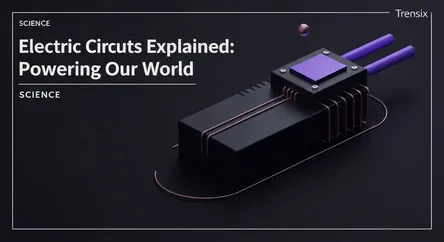Science
Electric Circuits Explained: Powering Our World

An essential guide to understanding electric circuits, the foundation of all modern electronics and the technology that powers our daily lives.
What is it?
An electric circuit is a complete, closed path through which electric current can flow. For a circuit to work, it needs an energy source like a battery or a generator, conductors such as wires to carry the current, and a load—a device that consumes the electrical energy, like a light bulb or a motor. This unbroken loop allows electrons to move from the power source, through the load, and back to the source, enabling the transfer of energy. If there's any break in this path, it becomes an open circuit, and the flow of current stops.
Why is it trending?
While a fundamental concept, electric circuits are constantly evolving. The trend of miniaturization has led to the development of integrated circuits (ICs), which pack millions or billions of components onto a tiny chip. This innovation is the driving force behind modern electronics. Today, advancements focus on creating more powerful, energy-efficient, and flexible circuits for next-generation technologies. These advanced circuits are crucial for the development of Artificial Intelligence (AI), the Internet of Things (IoT), 5G networks, and even quantum computing, keeping the field at the forefront of technological innovation.
How does it affect people?
Electric circuits are the backbone of modern society, fundamentally impacting nearly every aspect of daily life. They power our homes, from lighting and kitchen appliances to entertainment systems. Every digital device we use, including smartphones, laptops, and medical equipment, relies on complex circuits to function. In transportation, they are essential for cars and public transit. Properly designed circuits also ensure safety by preventing electrical hazards like short circuits and overloads in buildings. Without electric circuits, the conveniences and technologies we depend on would not exist.